(This year, we published many inspiring and amazing stories that made us fall in love with the world – and this is one our favourites. Click here for the full list).
It was a beautiful spring day in Paris and I was on the terrace of Café Charlot in the French capital’s chicest district, the Marais. Sipping an Aperol spritz, I watched the parade of Parisian glitterati sashay past me. At this time of year, Paris loves to celebrate the end of the dreary winter months, and nowhere can the famous Parisian joie de vivre be felt more strongly than in this Rive Droite centre of frivolity.
On that day, however, I wasn’t interested in the surface-turned-runway of the Marais – but rather what lay below these designer-clad feet. Because, incongruously, under the district’s cobblestoned streets lie the remnants of the mysterious Knights Templar’s mightiest stronghold.
From Indiana Jones to The Da Vinci Code, the legendary figures of the Knights Templar loom large in the modern imagination. Behind the legends, however, is an epic tale, spanning centuries and continents – one that ends in Paris where the traces of the Knights Templar’s final years can still be seen by those who know where to look. And I was in the Marais on that beautiful spring day to find them.
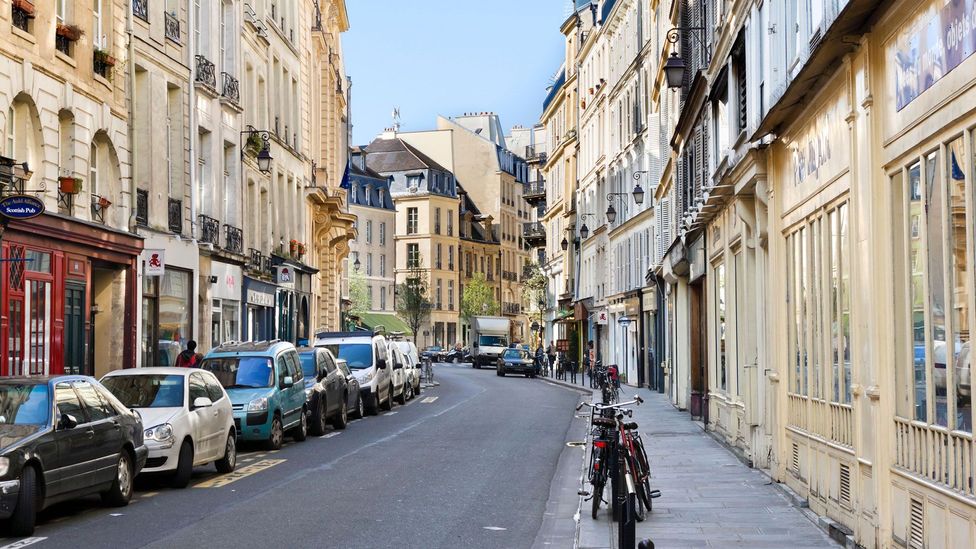
Under the streets of Paris' Marais district lie the remnants of a lost Knights Templar stronghold (Credit: Eric James/Alamy)
You may also be interested in:
• The birthplace of the Illuminati
• The last true knight on Malta
• Is this the home of the Holy Grail?
The story of the Knights Templar began in 1099 when Catholic armies from Europe captured Jerusalem from Muslim control during the first Crusade. European pilgrims flooded into the Holy Land as a result, but many were robbed and killed while passing through Muslim-controlled areas during their journey. To combat these attacks, French knight Hugues de Payens created a military order consisting of eight other soldiers called the Poor Knights of Christ of the Temple of Solomon – later known simply as the Knights Templar – around the year 1118. The elite order of knights set up headquarters on Jerusalem’s sacred Temple Mount vowing to protect all Christian pilgrims to the city. The Knights began amassing a great fortune, with grateful pilgrims showering them with riches in exchange for their protection.
The power of the Knights Templar grew exponentially in 1139 and spread well beyond Jerusalem, when Pope Innocent II issued a Papal Bull that gave the order extraordinary protections, including an exemption from paying taxes or tithings anywhere in the world and the retention of all the gifts they received from grateful pilgrims travelling through the Holy Land.
The same year, King Louis VII donated an estate to the Templars on the north-eastern edge of the Parisian city walls where a group of Knights settled. Though non-exclusionary with members and chapters throughout Europe, the Knights Templar was a French organisation with a French founder. Furthermore, nearly every Grand Master or supreme leader in Templar history was French, thereby making France the seat of Templar power in Europe.
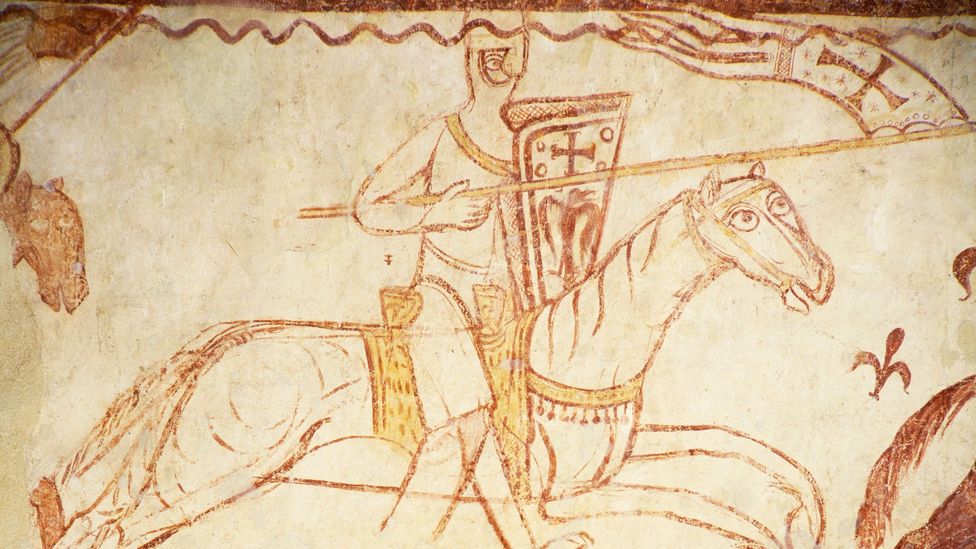
The legendary figures of the Knights Templar loom large in the modern imagination (Credit: DeAgostini/Getty Images)
“Paris has preserved their memory in its toponymy: Square du Temple, boulevard du Temple, rue du Temple, rue Vieille-du-Temple, rue des Fontaines-du-Temple, carreau du Temple…” said Thierry do Espirito, host of the Knights Templar in Paris tour and author of The Knights Templar for Dummies.
Their original estate has long since succumbed to the great march of history, but you can still visit the site on which it once stood on rue de Lobau, located just behind the Hôtel de Ville.
Back in the day, surrounding the mansion were miles of uncultivated marshland. In order to make the land arable, the Knights Templar set about drying the marsh – a feat that they were able to fully achieve circa 1240. But though the wetlands have long since disappeared, the area is still referred to as ‘le Marais’ or ‘the Marsh’.
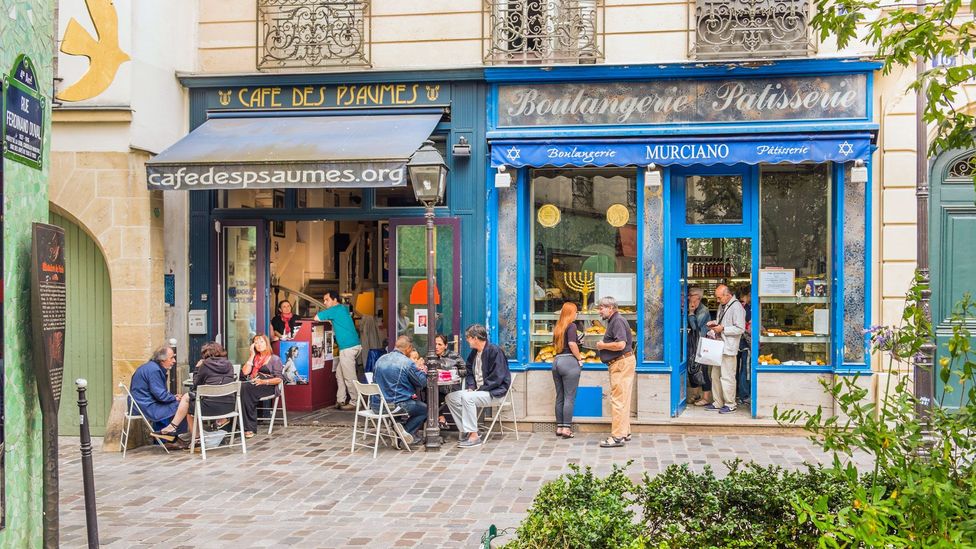
The Knights Templar dried the wetlands left behind by ancient branch of the River Seine to create le Marais, which means ‘the Marsh’ (Credit: edpics/Alamy)
I paid my bill and headed to the stunning Square du Temple, whose sprawling verdant grass shaded by leafy trees form the perfect spot for a Parisian pastime even more beloved than people-watching: the mid-afternoon aperitif al fresco. But I’d come for a different reason: this idyllic park is built smack dab over the ruins of the Knights Templar’s European headquarters: the enclos du Temple.
Paris has preserved their memory in its toponymy
Surrounded by eight 10m-high crenelated walls reinforced by turrets and buttress, this gargantuan fortress once featured towers, a drawbridge, a gothic church, vast stables and homes for the knights. It was here that the Templars guarded mass portions of their treasure and created a powerful ‘state-within-a-state’ that was entirely sovereign from the kings of France.
While this system of sovereignty worked for a time, everything changed in 1303 when the Knights Templar were forced to move their base of operations from the Temple Mount to their European headquarters – the enclos du Temple – after Jerusalem was recaptured by Muslim armies.
The king of France at the time, Philip the Fair, deeply resented the Knights Templar’s powerful ‘state-within-a-state’ and resolved to bring the order down by any means necessary. King Philip’s reasoning for destroying the order is speculated to this day, though many scholars believe his motivations were financial. “Philip could use the silver coin he acquired from the Templars' treasury in Paris to improve the quality of the heavily debased French coinage,” explained Dr Helen Nicholson, author of The Knights Templar: A New History and professor of medieval history at Cardiff University.
The truth is, as king, Philip didn’t really need to explain his reasoning. So, on 13 October 1307, he had scores of Knights Templar, including the supreme authority and single most powerful member of the order, Grand Master Jacques de Molay, arrested on charges that included devil worship, blasphemy, idolatry and homosexuality. The final charge is strangely poetic, as today the Marais is a well-known LGBTQ+ district.
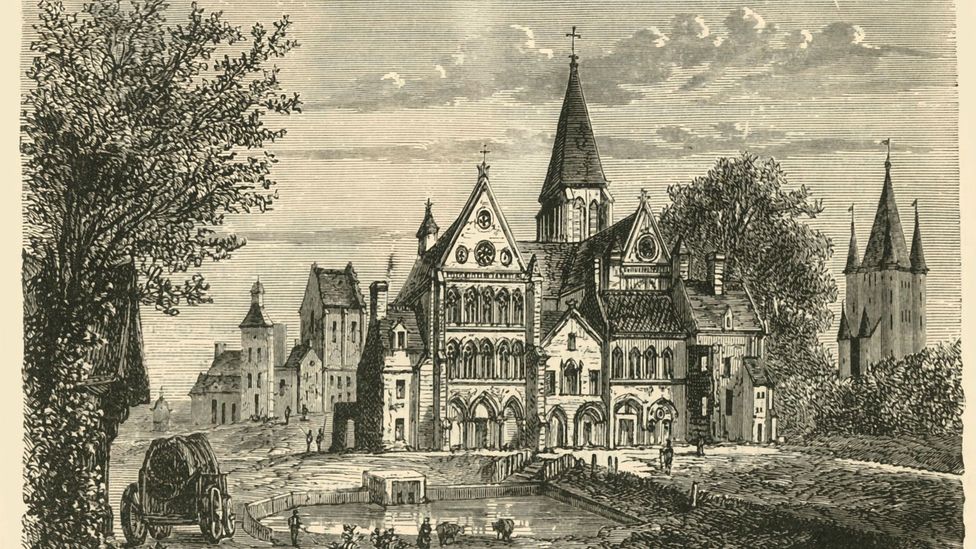
The Marais was once home to the Knights Templar’s European headquarters, a gargantuan fortress known as the enclos du Temple (Credit: The Print Collector/Alamy)
Looking out at the revellers and sunbathers in the Square du Temple, I found it hard to imagine a time when this small oasis just off the raucous Place de la République was walled in and filled with stoic warrior knights – mostly because none of the structures that comprised the enclos du Temple stand today, having been destroyed by Napoleon III in 1853 to make way for Baron Haussmann's vision for a new Paris.
But if you know where to look, you can still see traces of the knights’ ghostly presence throughout the district. Number 158 on rue du Temple is where the grand entrance to the enclos once stood, and rumour has it that in the basement of 32 rue de Picardie, now the chic restaurant-bar Les Chouettes, the remnants of a corner tower can still be seen. True Templar enthusiasts can take a trip to the Château des Vincennes, just outside Paris, where the heavy gates of the Grosse Tour (great tower) from the enclos du Temple are kept.
Bordering the Square du Temple is an enclosed market called the Carreau du Temple; in 2007, while the structure was undergoing renovations, the remains of a Templar cemetery were unearthed, along with the skeletons of knights who died in France.
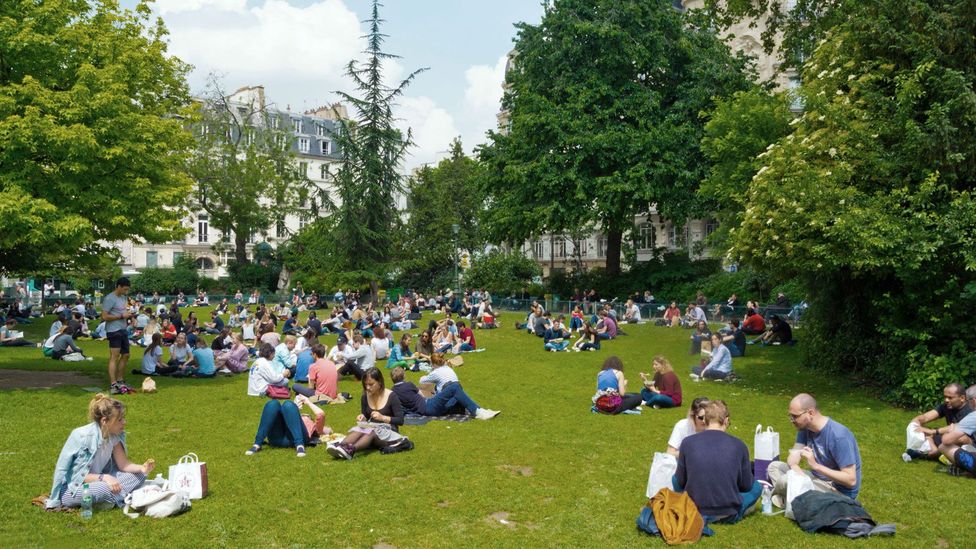
Today, Square du Temple sits atop the ruins of the enclos (Credit: Peter Forsberg/Alamy)
Just across the rue du Temple from where I was on the Square du Temple, I noticed a church with two large red banners emblazoned with white crosses, reminiscent of the Knights Templar’s sigil that featured a red cross with a white background. Intrigued to find out if there was any connection, I headed inside, where I found out from the on-duty priest that the church is called the Église Sainte-Élisabeth de Hongrie and the banners in fact signify the Order of Malta (officially the Sovereign Military Hospitaller Order of St John of Jerusalem of Rhodes and of Malta) – a chivalric order that rivalled the Templars.
So, I was surprised to find that when I asked the priest for information on the enclos du Temple, he promptly beckoned me into a locked office where a miniature mock-up of the structure is kept. It turns out that even though the two orders loathed one another for a period, with the Hospitallers disagreeing with the Templar’s enterprising ways, many Templars were transferred to the Knights Hospitaller after their order’s dissolution, effectively creating a merger. Pope Clement V also gave control of the enclos du Temple to the Knights Hospitaller after the arrest and subsequent fall of the Templars.
The priest directed me to several paintings throughout the church that feature depictions of the imposing enclos structure. Looking at these recreations I felt almost transported to another time and a Paris entirely alien to my experience.
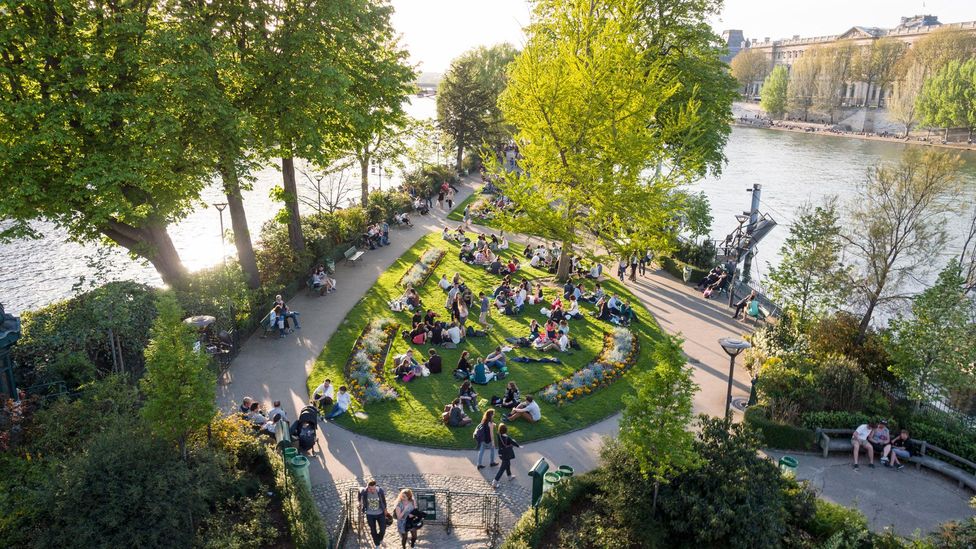
The Knights Templar’s story ends in Square du Vert-Galant, where the last Grand Master, Jacques de Molay, was burned at the stake (Credit: Marshall Ikonography/Alamy)
Exiting the church’s ornate doors, I headed deeper into the Marais. Walking up rue Réamur I passed the Musée des Arts et Métiers, an engineering and science museum, once the Saint-Martin-des-Champs Priory where, according to Do Espirito, some of the imprisoned Templars were held.
With this in mind, I headed towards the spot where the story of the Knights Templar more or less ended – the small verdant tip of Île de la Cité on the River Seine that faces the Marais district, called the Square du Vert-Galant.
Much like the Square du Temple, the Square du Vert-Galant is a peaceful place where Parisians and tourists come to picnic. Although it looked like something out of a Renoir painting today, on 18 March 1314 it looked more like a scene from a horror film. Because it was on that day that after seven years of imprisonment, de Molay was burned alive at the stake.
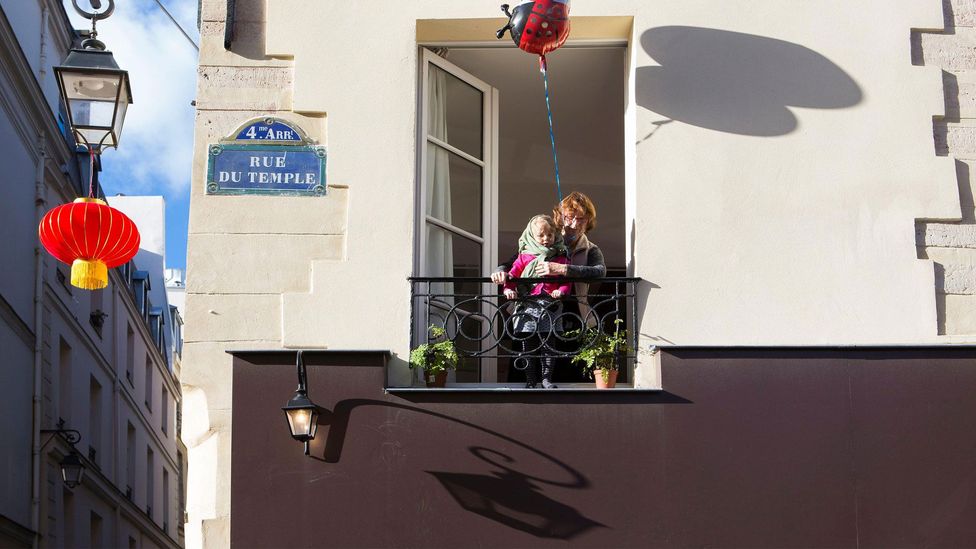
Reminders of the Knights Templar can be found throughout Paris, particularly in the Marais (Credit: Hemis/Alamy)
A small plaque at the entrance of the park reads ‘In this spot, Jacques de Molay, the last Grand Master of the Order of the Templars, was burned’. It is said that as he died, de Molay cursed Pope Clement V and King Philip the Fair and all his descendants. He proclaimed that within a year both Philip and Clement would die, and that the king’s bloodline would no longer rule in France.
The two men did, in fact, die that year, and in the 14 years that followed, all King Philip’s heirs perished, effectively destroying the bloodline that had ruled France for three centuries.
We may never know, of course, if de Molay really cursed the king and Pope Clement V. Whatever the truth, it’s buried beneath the cobblestoned streets of the Marais, along with countless other Parisian secrets.
BBC Travel’s Mysteries of the Knights Templar tracks down the secret sites and mysterious ceremonies of what was once one of the most powerful and wealthy organisations in Europe.
Join more than three million BBC Travel fans by liking us on Facebook, or follow us on Twitter and Instagram.
If you liked this story, sign up for the weekly bbc.com features newsletter called "The Essential List". A handpicked selection of stories from BBC Future, Culture, Capital and Travel, delivered to your inbox every Friday.